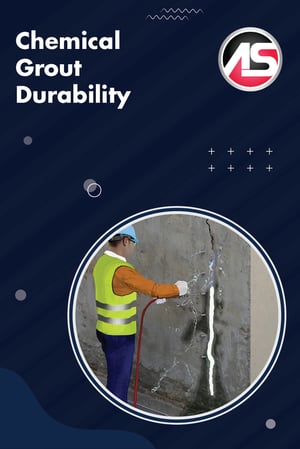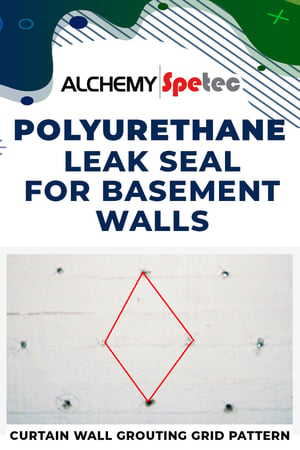
 For most of my 36 years in the chemical grout industry, I have listened to people refer to chemical grouts as temporary leak repair in the same manner they mention a band-aid in stopping bleeding. Many of these same persons also say that stopping water leaks with chemical grouts is like “smoke and mirrors”, implying some sort of black magic. I must state that they are wrong on both counts.
For most of my 36 years in the chemical grout industry, I have listened to people refer to chemical grouts as temporary leak repair in the same manner they mention a band-aid in stopping bleeding. Many of these same persons also say that stopping water leaks with chemical grouts is like “smoke and mirrors”, implying some sort of black magic. I must state that they are wrong on both counts.
The mechanism by which chemical grouts stop leaks is based upon basic textbook polyurethane and acrylic chemistry. It may seem a little mysterious because most of the reaction takes place out of sight within or behind the concrete structure, but the reactions can be duplicated in the laboratory for doubters to see. As for durability and permanence, the oldest of the chemical grout manufacturers have documented case histories that are now 50 years old. I would call these permanent repairs when compared to some leak seal alternatives.
It is true, however, that for every success story I offer, someone will bring up an instance where chemical grouting did not work. Upon careful examination, these failures are almost always due to the products being incorrectly specified or installed. The biggest problem I have encountered that leads to premature failures occurs when the contractor fails to pump grout into a crack or joint until total rejection occurs. That is the point where the crack will accept no more grout. Correct product selection and installation in consultation with the manufacturer are essential to a successful long-lasting leak sealing project.



 Today’s guest blogger is John Ziebell, an independent representative of Alchemy-Spetec. Formerly the Vice President of Operations for Deneef Construction Chemicals, Inc., John has 36 years of experience in the chemical grout industry and is currently a member of the International Concrete Repair Institute (ICRI).
Today’s guest blogger is John Ziebell, an independent representative of Alchemy-Spetec. Formerly the Vice President of Operations for Deneef Construction Chemicals, Inc., John has 36 years of experience in the chemical grout industry and is currently a member of the International Concrete Repair Institute (ICRI). 
